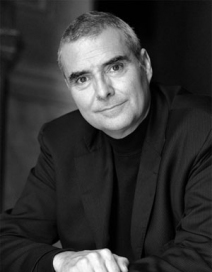Dominique Perrault

Dominique Perrault nato a Clermont-Ferrand, Francia nel 1953, è un architetto e urbanista francese. Ha conseguito il diploma in architettura presso l'École nationale supérieure des beaux-arts a Parigi nel 1978. E successivamente un diploma post-laurea in urbanistica dall'École nationale des ponts et chaussées ed anche in storia alla École des Hautes Études en Sciences Sociales.
Diviene celebre per la progettazione della nuova sede della Bibliothèque Nationale de France, che gli fa meritare il Premio Mies van der Rohe nel 1996 e che diventa trampolino di lancio per la successiva progettazione rivolta sia al pubblico che al privato in tutto il mondo, partecipando anche numerosi concorsi pubblici. Nel 1981 ha fondato lo studio di Parigi, cui si sono affiancati, nel corso degli anni, gli studi di Berlino e di Lussemburgo. Il suo linguaggio progettuale tende a fondere armonicamente architettura e ambiente naturale. Presente in vari concorsi ed esposizioni internazionali, ha ottenuto riconoscimenti pubblici. Tra le sue opere ricordiamo il Velodromo e la piscina olimpica di Berlino, l'ampliamento della Corte di Giustizia dell'Unione Europea in Lussemburgo, l’École supérieure d'ingénieurs en électronique et électrotechnique a Marne-la-Vallée, la riqualificazione di piazza Garibaldi a Napoli, il campus femminile Ewha a Seoul, solo per citarne alcune.
Per Perrault l’architettura non può essere ricondotta semplicisticamente agli elementi architettonici come “porta”, “muro”,”tetto” o “facciata”, ma concepita come parte integrante del paesaggio: vetro, cemento o metallo divengono così, nei suoi progetti, non più elementi architettonici costruiti, ma elementi di trasformazione del territorio e del paesaggio.
E’ stato insignito di alcuni dei più prestigiosi premi del settore quali il Premio Mies van der Rohe, la Grande Medaille d’or d’Architecture e il Grand Prize National d’ Architecture.
Dominique Perrault born in Clermont-Ferrand, France in 1953, is a French architect and town planner. He graduated in architecture at the École nationale supérieure des Beaux-Arts in Paris in 1978. postgraduate degree in urban planning from the École nationale des ponts et chaussees and also in history at the École des Hautes Etudes en Sciences Sociales . He became famous for the project of the new headquarters of the Bibliothèque Nationale de France, which earned him the Mies van der Rohe Prize in 1996 and that was the starting point for the subsequent projects aimed both the public and private use around the world and participating numerous competitions. In 1981 he founded the studio in Paris, who has been joined over the years, by the studios in Berlin and Luxembourg. Its design language tends to blend harmoniously architecture and natural landscape. Present in various competitions and exhibitions, he received public recognitions. His most famous works are the Velodrome and Olympic swimming pool in Berlin, the extension of the Court of Justice of the European Union in Luxembourg, the École Supérieure d'Ingénieurs en Electronique et Electrotechnique in Marne-la-Vallee, the re-development of Piazza Garibaldi in Naples, the campus in Ewha’s University in Seoul, just to name a few. Perrault architecture’s conception can not be simplistically attributed to architectural elements such as "door", "wall", "roof" or "facade", but conceived as an integral part of the landscape: glass, concrete or metal become, in his projects, no more architectural elements built, but elements of the transformation of the territory and landscape. He has received some of the most prestigious awards in the field such as the Mies van der Rohe Prize, the Great Medaille d'Or and the Grand Prize National d’ Architecture.

_600x600.jpg)
_600x600.jpg)
_600x600.jpg)
_600x600.jpg)
_600x600.jpg)
_600x600.jpg)